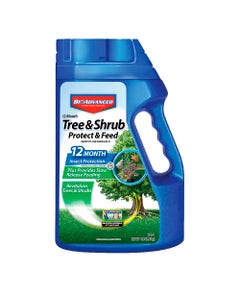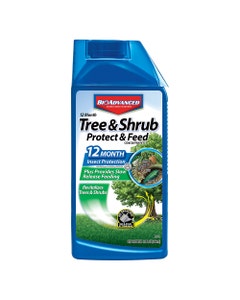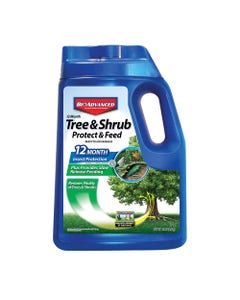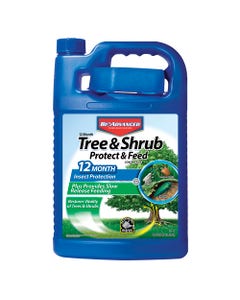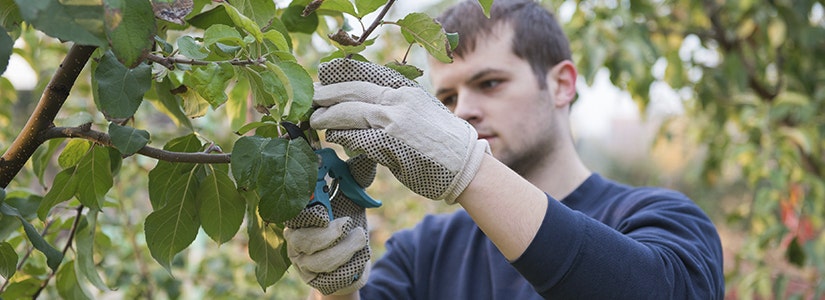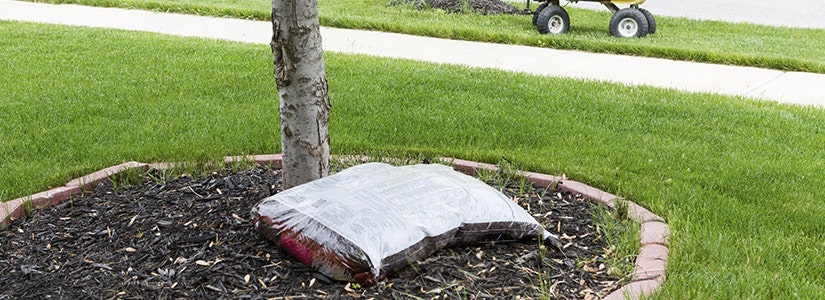

- Home
- Solution Center
- Learn
- Learn: Tree & Shrub
- Tree Care: Spring
Tree Care: Spring
Established trees may seem self-sufficient, but arborists agree: Healthy trees don’t just happen. Trees are low-maintenance, not no-maintenance. Tending to seasonal chores helps keep trees healthy and protects your landscape investment.
Get your trees off to a growing start by following six simple steps for spring tree care.
1. Clean Up
Kick off the new growing season with a quick spring cleaning – for trees.
- Remove any remaining decorative holiday lights. Don’t allow lights to stay wrapped around tree trunks or branches. If you forget about them, you risk girdling growth.
- When temperatures warm, remove any protective winter wraps you placed around trunks.
- Rake and gather debris that collected beneath trees over winter, such as small twigs, leaves or fallen fruits. This is especially important with trees susceptible to fungal diseases, which can harbor on debris. Examples include Pines affected by Diplodia Tip Blight or Crabapples affected by Apple Scab.
2. Protect And Feed
One application of BioAdvanced® 12 Month Tree & Shrub Protect & FeedII* is the perfect way defend against insect infestations up to one year, and slow-release feeding lasts up to 3 months.
- There’s no spraying – just follow label instructions to apply.
- This product kills invasive pests like Japanese Beetles, Adelgids and more. Check the label for a complete list of pests.
- Check with your local extension agent or a licensed arborist to learn which pests and diseases pose the most serious threat to your trees – and how to best treat them.
- Trees come in different shapes and sizes, and require different amounts of product. Be sure to check the label for application instructions. Just one application offers up to one year of protection.
- Applying before mulching ensures more product reaches the roots of your tree.
3. Mulch
A layer of mulch helps soil retain moisture and suppresses weeds. It’s most crucial when caring for younger trees, namely trees that have been in the ground less than 10 years, but it’s OK to mulch older trees, too.
- Aim for a 3-inch-thick layer around trees but not against the trunk.
- Mulch piled against the trunk holds moisture and heat, which helps give diseases such as canker an easy point of access.
4. Water
Wait until soil thaws to tackle watering chores. If you water while the soil is still frozen, you’ll just create runoff.
- Deeply water trees that are located in areas where de-icing materials were used over winter. Irrigating moves salt-laden materials through soil and away from tree roots.
- Even though the weather is cool, don’t allow trees to dry out. You may have to water several times if weather warms or if you have sandy soil.
- Check your sprinkler system. Inspect emitters and lines for leaks or clogs. Look for puddling around trees; adjust sprinkler heads accordingly. Sprinklers shouldn’t spray water onto foliage of trees susceptible to fungal diseases.
5. Prune
The ideal time to prune most trees is during winter dormancy. Click here to learn more about how to prune trees.
- You can, however, remove any dead, damaged or broken branches in spring.
- If you’re unsure whether a branch is dead, wait until the tree leafs out. Dead branches are easy to spot once leaves unfurl.
6. Inspect
Before leaves appear, inspect tree trunks and branches, looking for signs of disease or damage. Not sure what to look for? Learn about inspecting trees and what to look for when identifying potential health hazards for your trees.
- Look for rabbit or vole damage near the base of trunks. If damage is present, erect a fine-mesh screen to prevent further damage, and monitor the tree’s health over time.
- If you do spot something that makes you feel uncertain about the safety of a tree, contact a local certified arborist to receive expert tree care advice.
*Not for sale in NY. Reclassified as restricted use in CT & MD.

